This is the completed fly from the vise in the step-by-step instructions.
Perhaps a better photo. Tied another this morning and took this photo with a colored background.
In their wonderful book "Hatches", Caucci and Nastasi detail a pattern called the "Hackled Comparadun". They have a drawing of one, but I don't think I ever saw a photo of one they dressed.
The rationale for the fly, by the authors, is that in the riffly water, a higher riding fly than their breakthrough "Comparadun" might be called for and so they tied the same pattern, but added hackle before and aft of the upright deer hair. Therefore, if you can tie a Comparadun style pattern, this will be very simple for you to tie. It simply involves adding hackling.
Now, when I refer to the "Comparadun Style" fly, I mean any version of the fly which uses flared deer hair at 180 degrees to the hook shank to form the wing and, generally, the floatation for the fly - except in this one in which the hackle will provide the primary floatation. This would even include Craig Matthews and Jon Juracek's Sparkle Dun pattern which came much later.
Materials:
Hook......................Size 14 Std. Dry (Barbless)
Tail/Shuck...............Straight Zelon
Abdomen/Thorax.....Dave Whitlock SLF Dubbing (Red Fox Squirrel Abdomen)
Wings.....................Comparadun Style fine tipped Deer Hair
Hackle...................."Nearly Cree" dry fly hackle
I apologize for the quality of the photos. I did not use a tripod or the best lighting. Did not use a background for the pictures either. If I ever do this again, I will do a better job in this regard.
Thanks for looking. Hope you enjoy this style fly as much as I do.
Step 1.
lay a thread base from just behind the eye to approximately the half-way point on the hook shank and then bring the thread back towards the eye about half way. This will put your thread at the wing tie down point - approx. 25% back from the eye of the hook. The thread base helps avoid the tendency of the deer hair from spinning on a bare hook shank. This will be important in the next step - flaring the wing.
Step 2.
Select a clump of deer hair for flaring. This is a crucial step. In order to tie a successful comparadun, you need the appropriate deer hair. This should be very fine deer hair which can be seen by looking at the tips. The hair should have very fine black tips. The amount of hair selected is also important. For a size 14 fly as this is, you should select approximately a wooden pencil sized bunch of hair.
A nice selection of deer hair with fine tips which will make flaring the hair easy.
Step 3.
Cut the appropriate sized bunch of deer hair close to the hide. Remove the fluff from the butt ends; and put in the hair stacker for stacking.
Remove the stacked hair with the tips pointed in the direction you want them oriented when applying the hair to the hook shank. This avoids getting the hair out of alignment as you change hands and the orientation of the hair tips.
Measure the length of the hair to be equal to the length of the hook shank.
Step 4.
Place the stacked and measured deer hair over the tie-in point established with your thread position. WHILE HOLDING THE BUTT ENDS TIGHT ON TOP OF THE SHANK, make one loose wrap and then one tight wrap - ONLY APPLYING TENSION STRAIGHT DOWNWARD. Make 2 or 3 more high tension wraps WHILE STILL HOLDING THE BUTTS FIRMLY IN POSITION at that same tie in position.
Step 5.
Lift up the butts and clip the butts as close to the thread as possible. Then, being careful not to allow the flared hair to spin, tie down tightly all the butts to the hook shank.
Step 6.
Bring your thread around to the front of the tied down hair. With a number of tight wraps right up against the base of the hair, build a small "dam" against the deer hair to cause the hair to stand up straight and flare out at 180 degrees to the hook shank.
Step 7. Take your thread to the thorax of the fly and tie in your tailing material. In this case, I used a straight Zelon. I prefer to tie in a "shuck" rather than split tails as the original Caucci and Nastasi patterns because I believe it gives you the edge in triggering a strike and the material, I believe, provides better buoyancy to the fly.
Wrap down the shuck material to the bend of the hook. You can trim the shuck to the length you want. In this hackled version, I tend to leave the "shuck" approximately the length of the fly's body plus thorax.
Step 8.
Wrap the abdomen with your intended color and texture of material. In this case, I am trying to imitate a Western Ginger Quill. So, I keep that in mind in selecting the color and texture of materials for the tail, abdomen and the hackle.
In this case, I am using SLF dubbing. Bring the dubbing material to the thorax area and then tie in an appropriately sized hackle of complementary coloring. I like to place a bit of dubbing just in front of the tied in hackle and also HARD against the front of the flared deer hair to help maintain a straight up-and-down position of the flared hair.
Step 9.
Wrap the hackle. I like, for this size 14, to have 3-4 turns behind the flared hair; and 4-5 turns directly in front of the flared hair. Once the hackle is wrapped, it can be trimmed, and the fly can be whip finished and you are done.
The completed fly from the front:



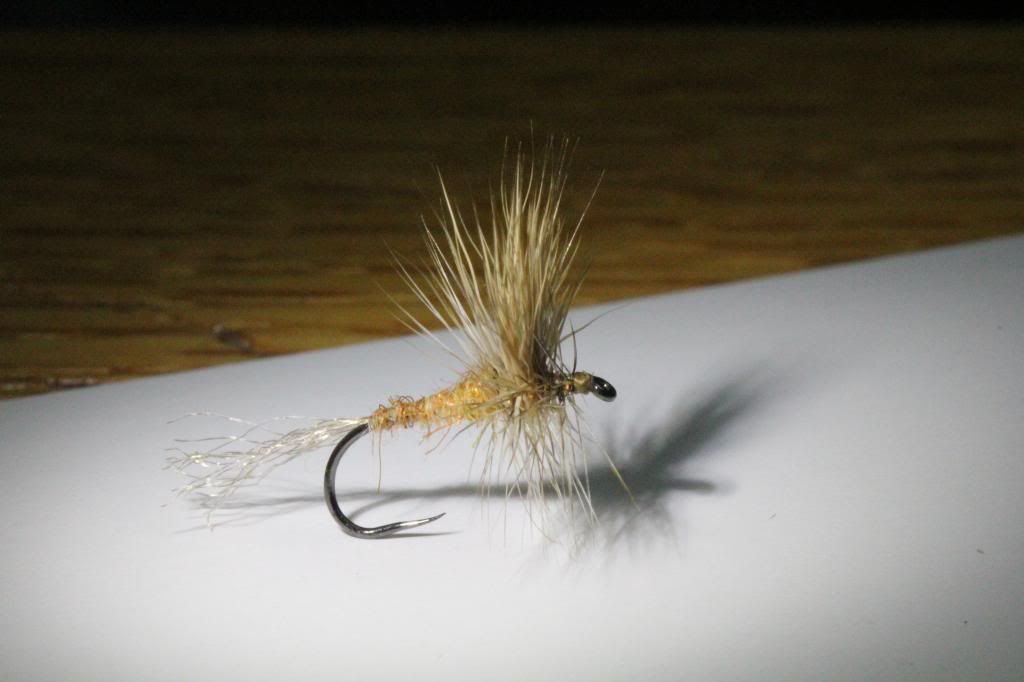
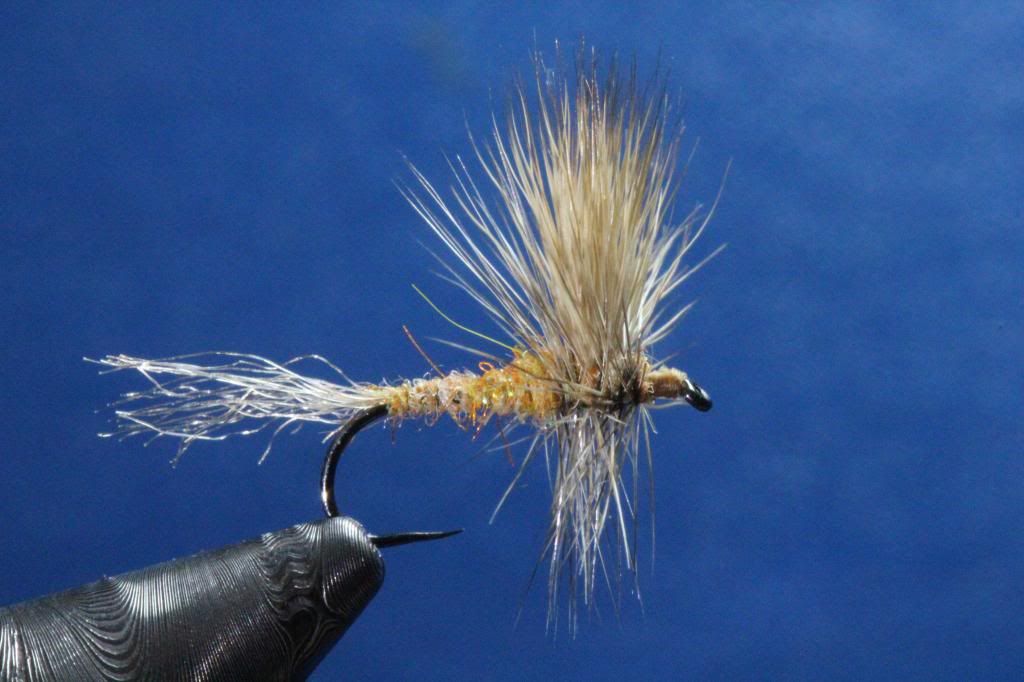
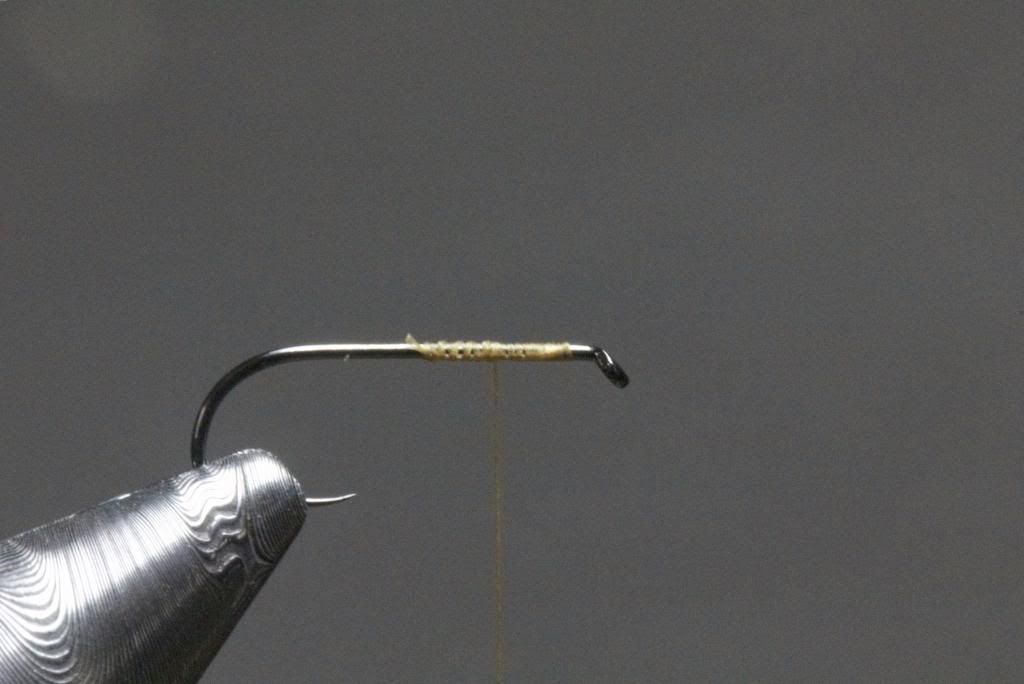
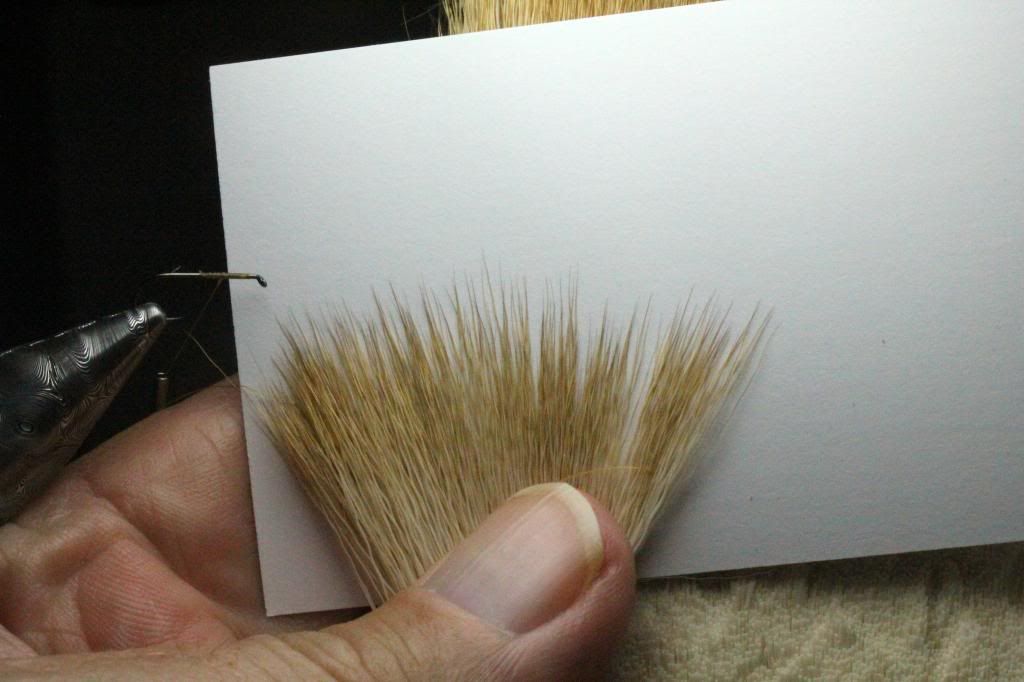
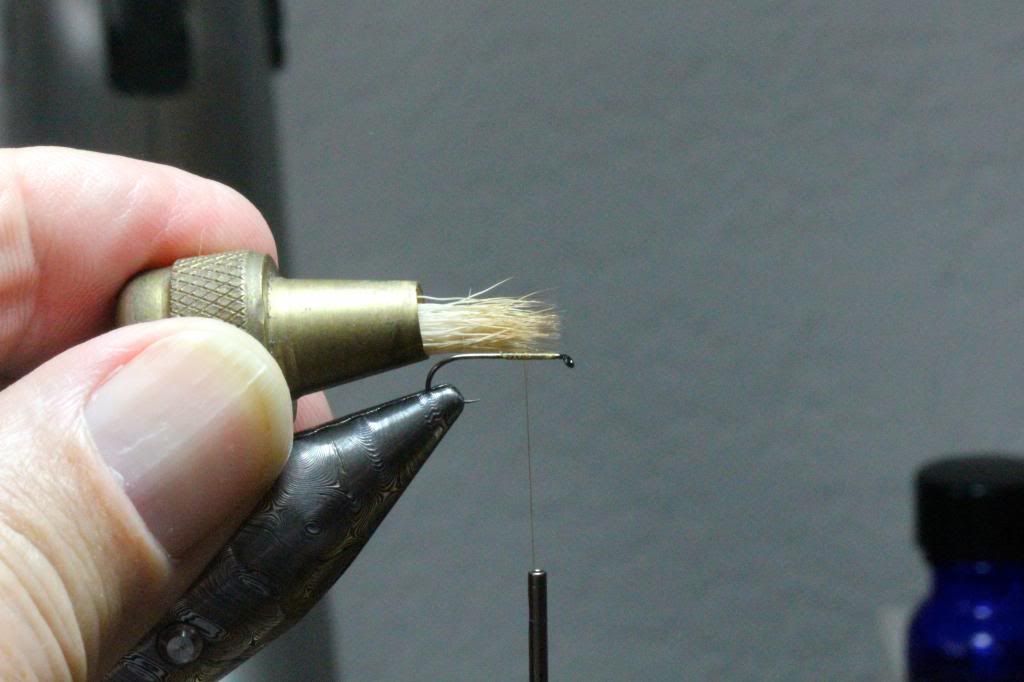
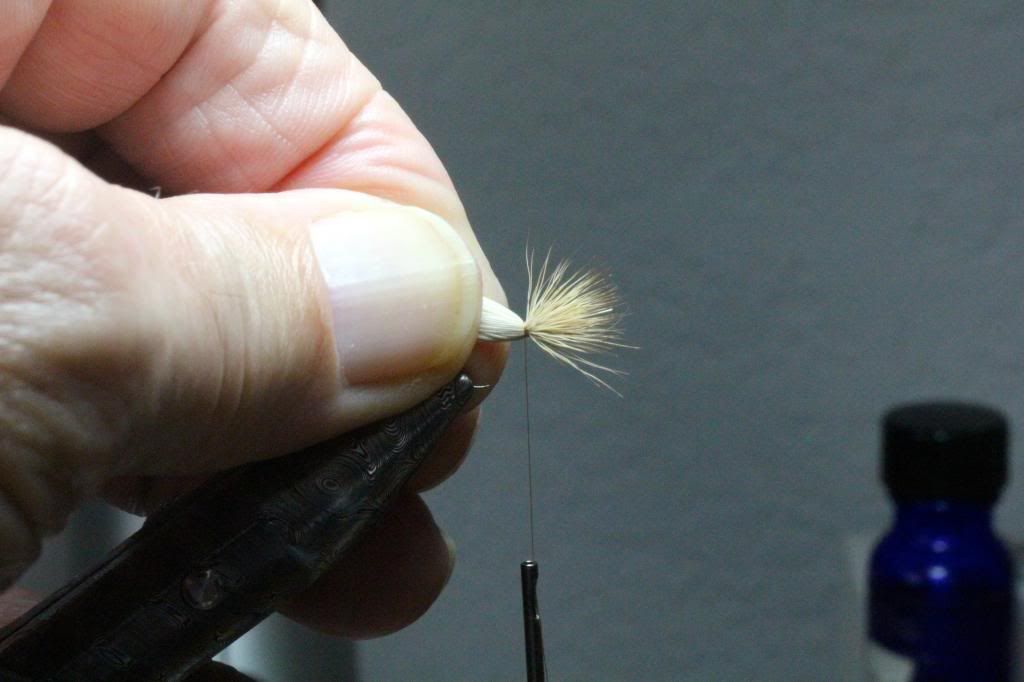
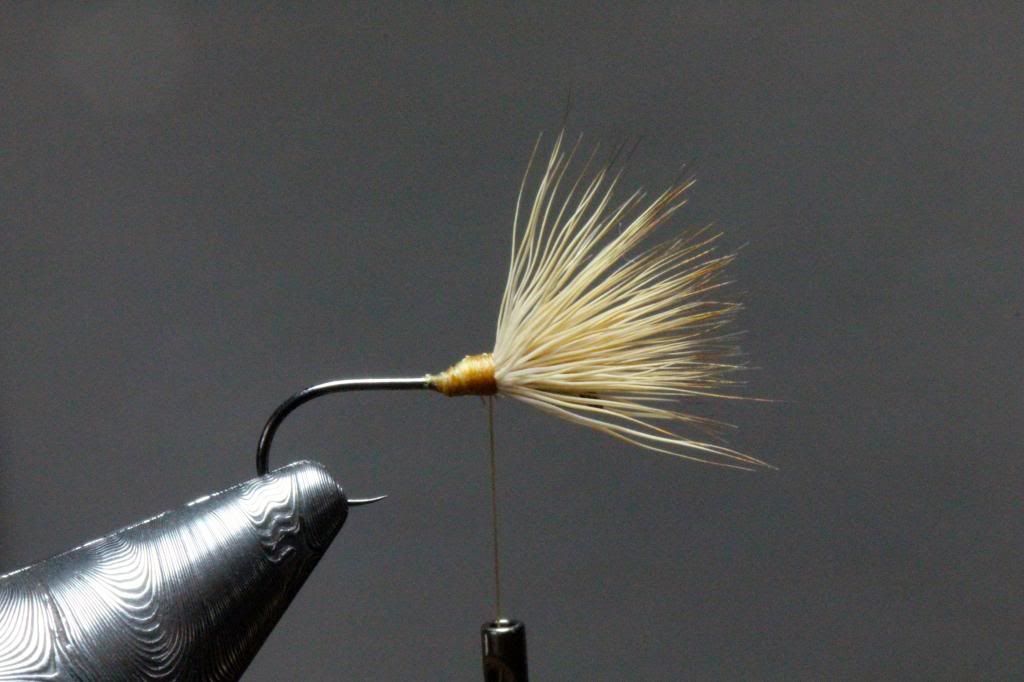
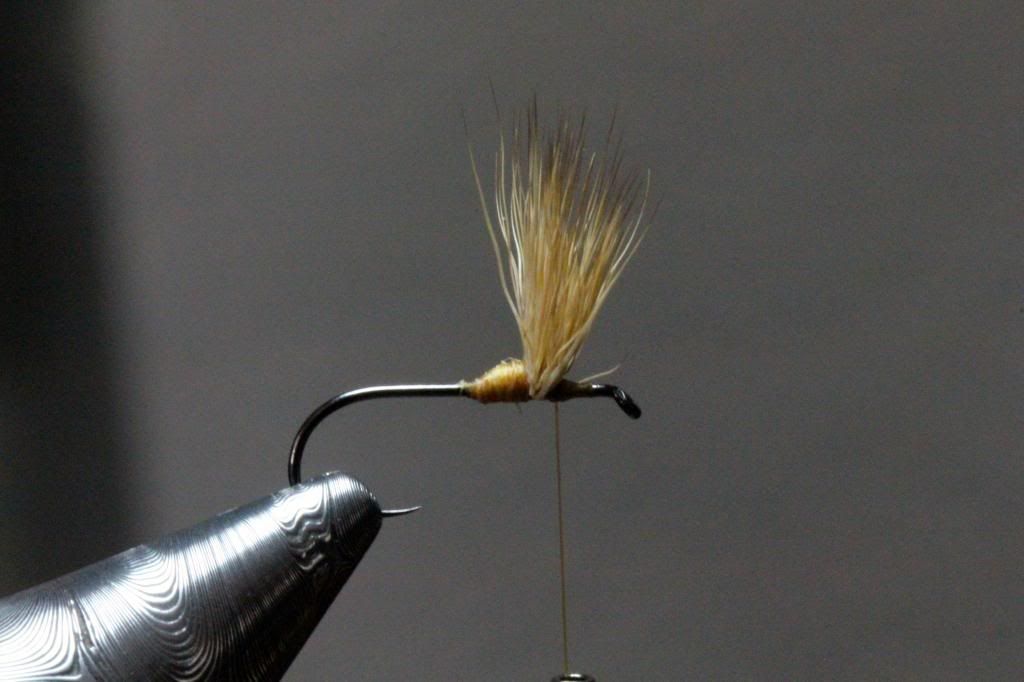
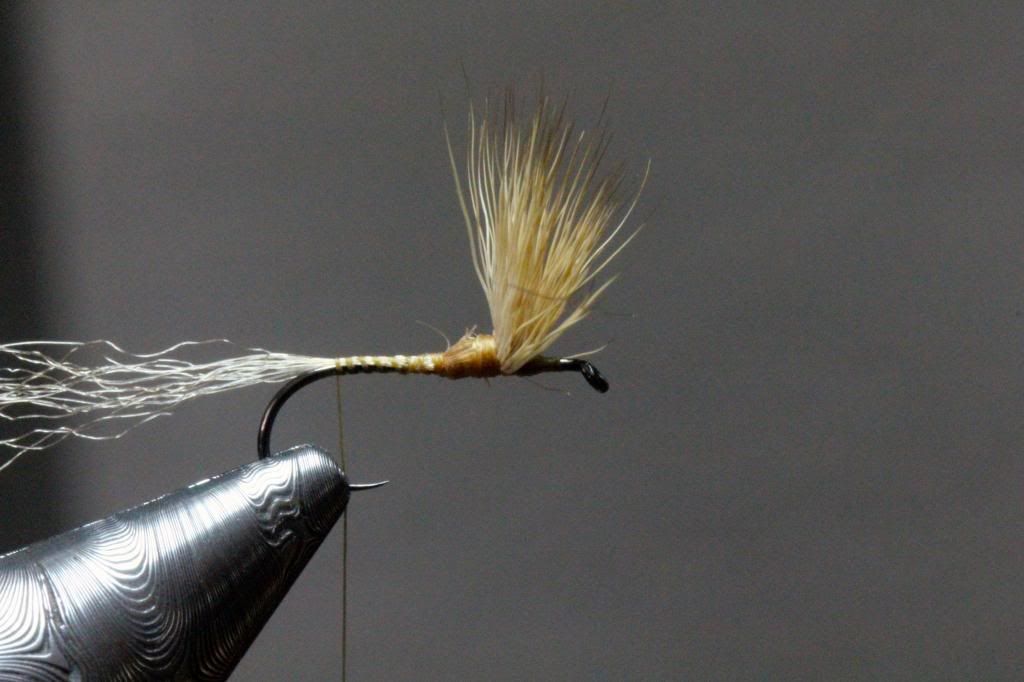
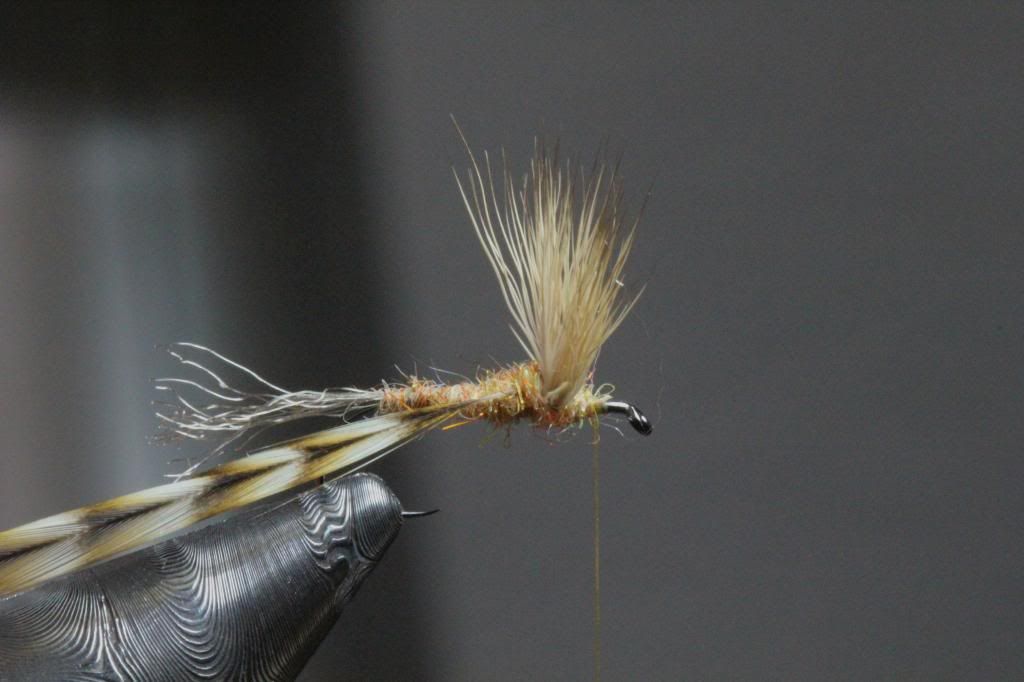

 Reply With Quote
Reply With Quote